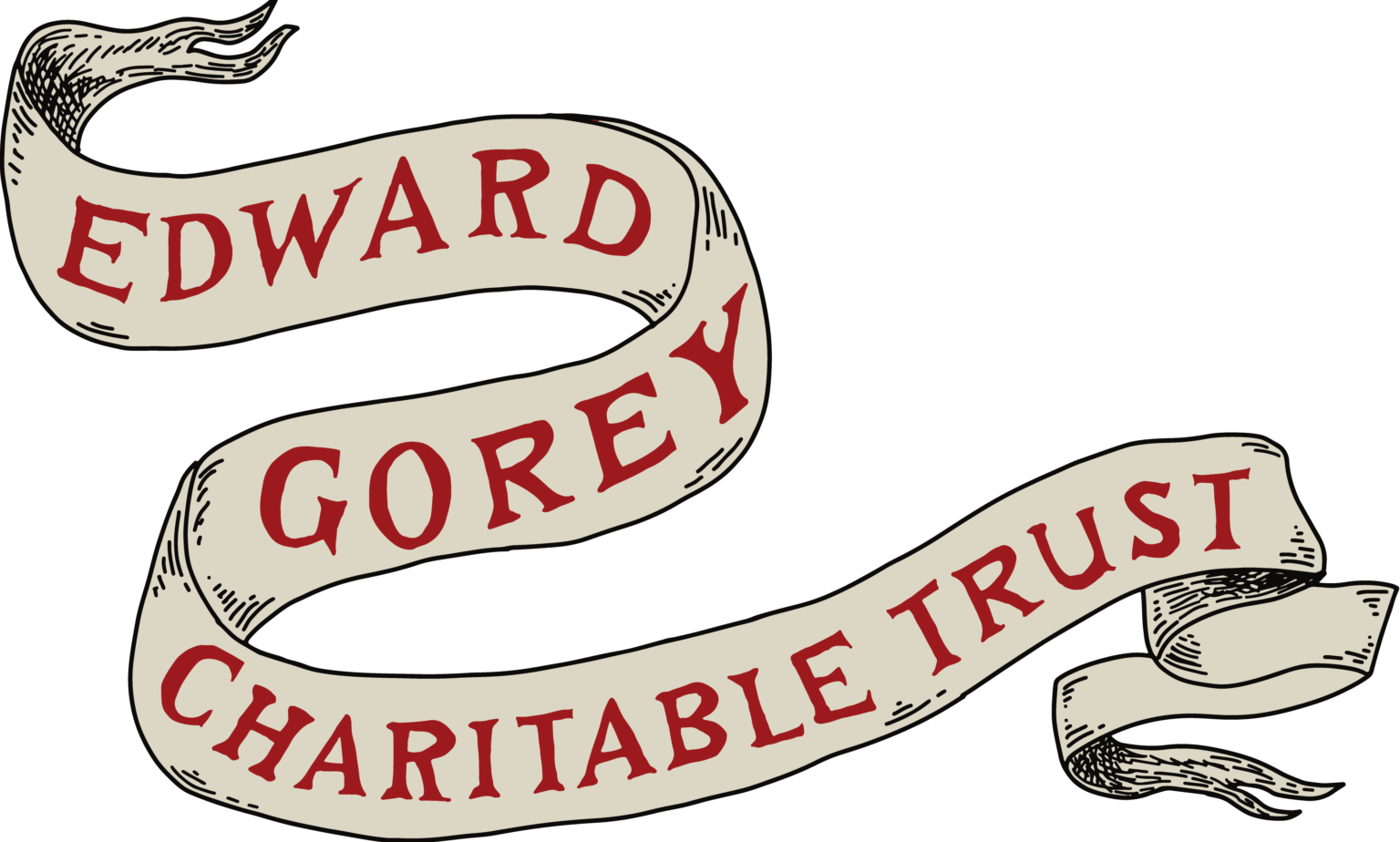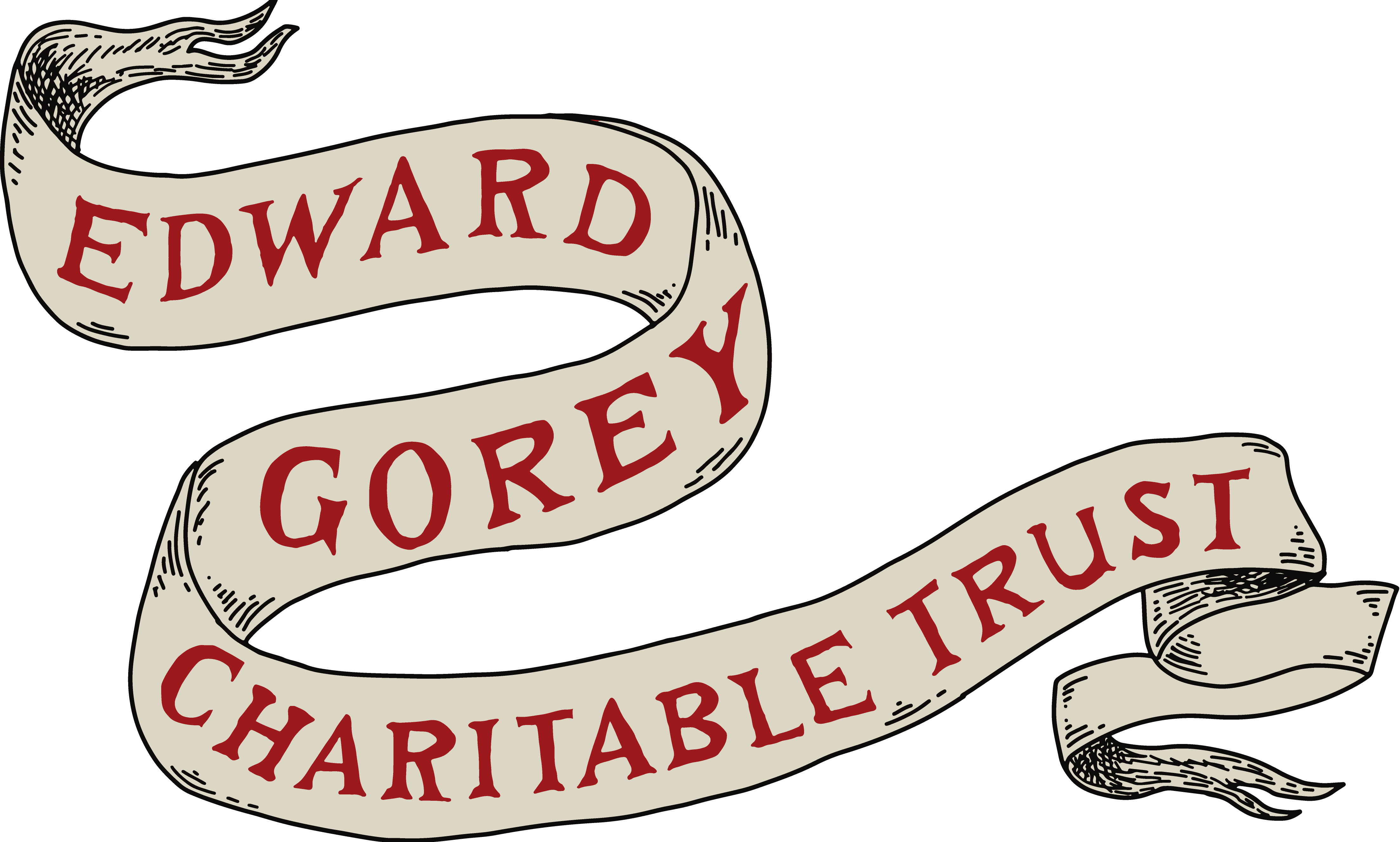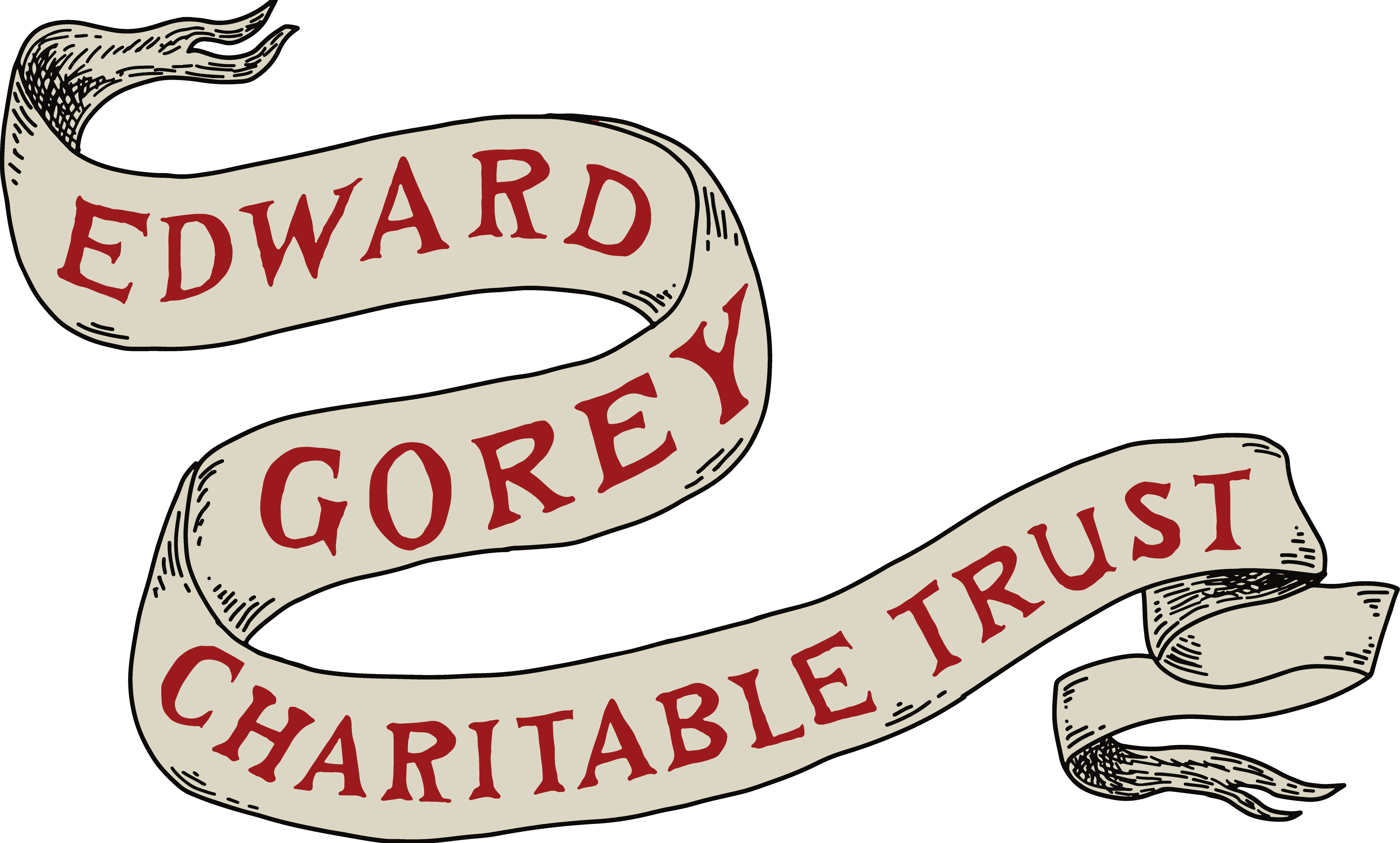By Maureen Mancini Amaturo
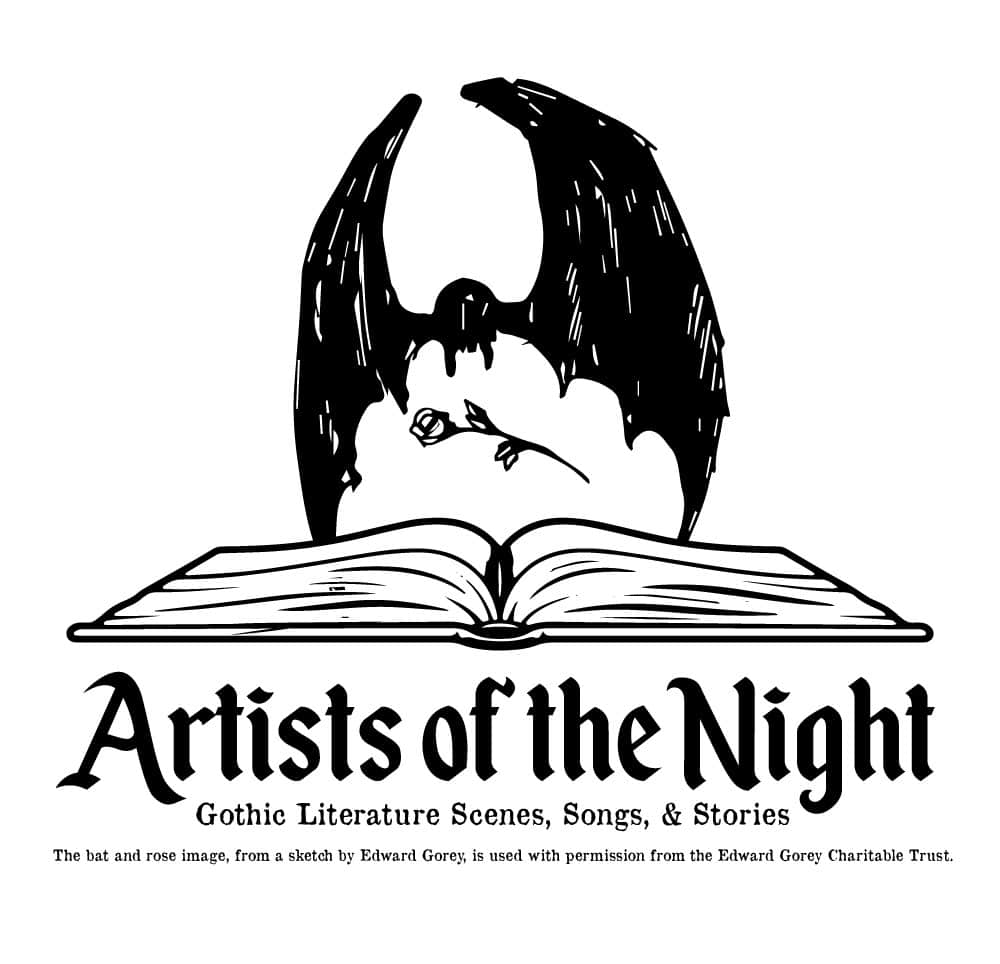
When I first conceived “ARTISTS OF THE NIGHT: Gothic Literature Scenes, Stories, and Songs,” an art exhibit inspired by and in tribute to Gothic Literature, I imagined Edward Gorey’s work as the gallery’s crown jewel. As fate and force would have it, that came to be. Being the Curator requesting the art, I learned that Gorey’s work is not often loaned for exhibitions, so when the answer was a very supportive “Yes,” the over-the-moon factor zoomed to a new galaxy. As a fan, not only would it be a personal thrill, but also this opportunity would give others the rare chance to view Gorey’s art up close, examine his intricate conflux of little black lines, and start new conversations. More importantly, new generations of fans — visiting school groups — could come to know Gorey and his entertaining, extraordinary view of the ordinary.
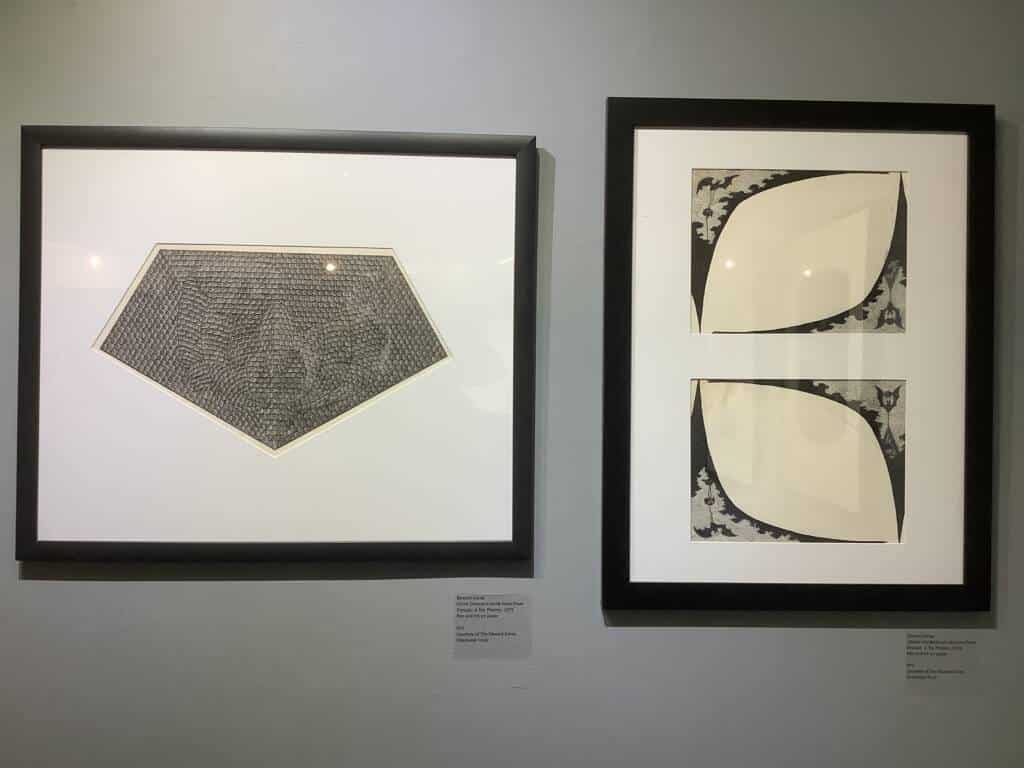
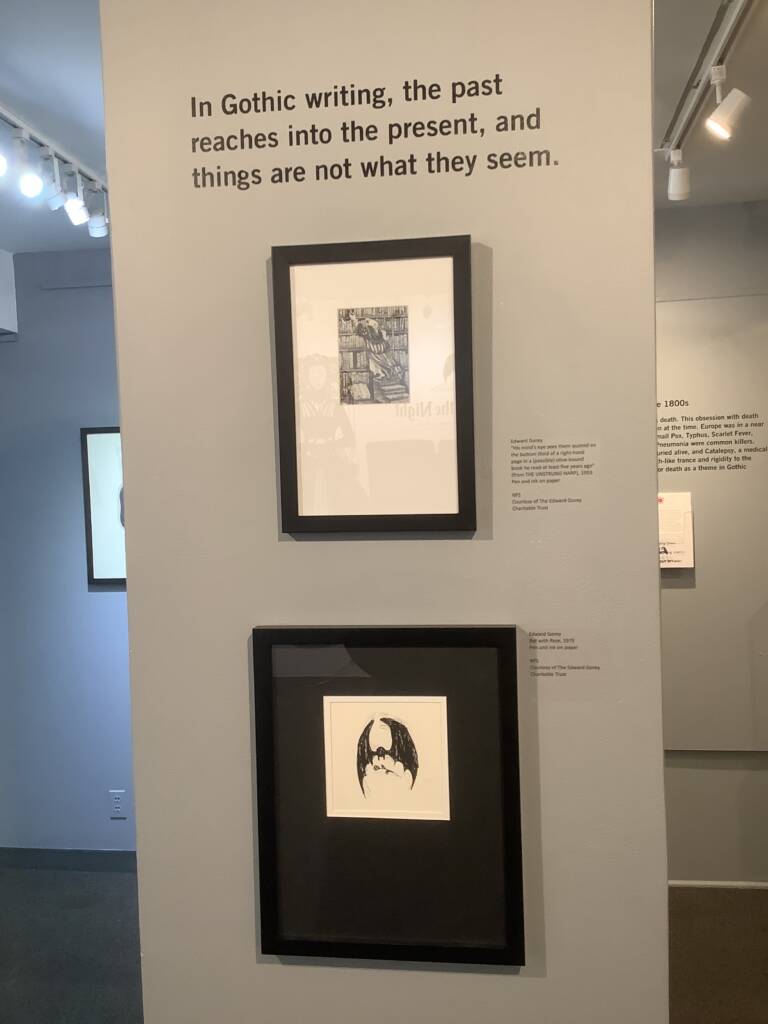

Opening night at the Rye Arts Center – Photos by ©Charles Seton
The night of the gallery opening, approximately 200 guests attended. In the following days, I served as docent for school tours, taught writing workshops, and lectured to enrapt tweens, teens, and young adults about the ongoing fascination with and the diverse interpretations of the Gothic genre, including humor. A group of MFA students immediately recognized Gorey’s work because of their familiarity with the PBS Mystery! series. Other young writers and artists — with the benefit of Edward Gorey’s art as a perfect example of what otherwise would seem an oxymoron, witty gothic — created their own interpretations of what was a new creative possibility to them, and they entertained me as much as the images that surrounded us. Analyzing an artist like Edward Gorey with an audience of fresh eyes gave me hope that creativity, individualism, and emotional connection will not be stunted by cell phones. Look at you, Edward Gorey. Still provoking, still inspiring.
In workshops, we noted that if there is one thing his work teaches, it’s that there is a duality to all things. People, too. We discussed how aristocratic his characters appear, yet there seems to be an incongruity about them. We discussed the proper settings in the images and the something askew in each scene. The well-dressed wobble. The elite succumb to ennui. The soigné sorts are suspicious. Illustrating the theme of duality, for instance, Gorey shows us divinely dressed people seated in an ornately designed theater box, but their faces are expressionless. We see luxury, but they seem lethargic. Is this a fabulous night out for them or not? Are we like them? He simultaneously reveals both sides of humanity and prods us to ask, “What is true?” Gorey goads his audience to get real in a multilateral way. And with Gorey’s sui generis view and insouciant spunk, he never fails to stimulate. He shows us that what we see is questionable, double-sided, and as biased as the viewer.
We discussed the parallelism of horror and humor — both transgress the norm to tell a story, both put characters in absurd or extreme situations, both are willing to go over the top, both build tension, both emotions are so primal — and how Gorey is one of the rare artists who depicts the relationship between what is horrifying and what is hilarious with such smooth strokes.
Playful language. Provocative images. Powerful messages. I and the next generation raise our black umbrellas to you, Mr. Gorey.
